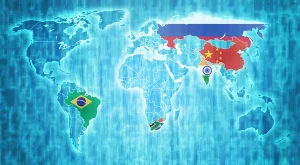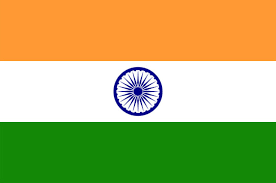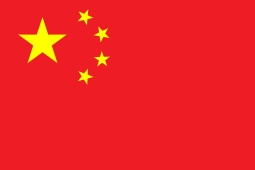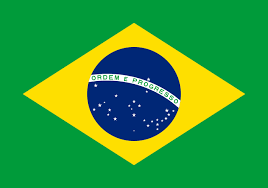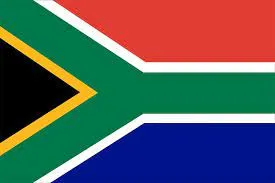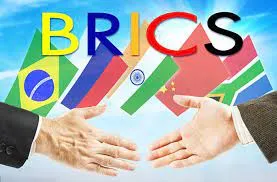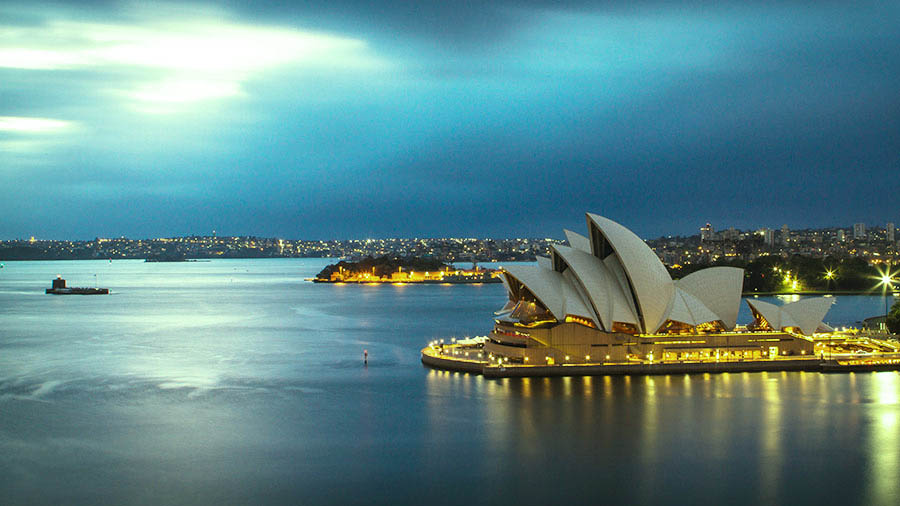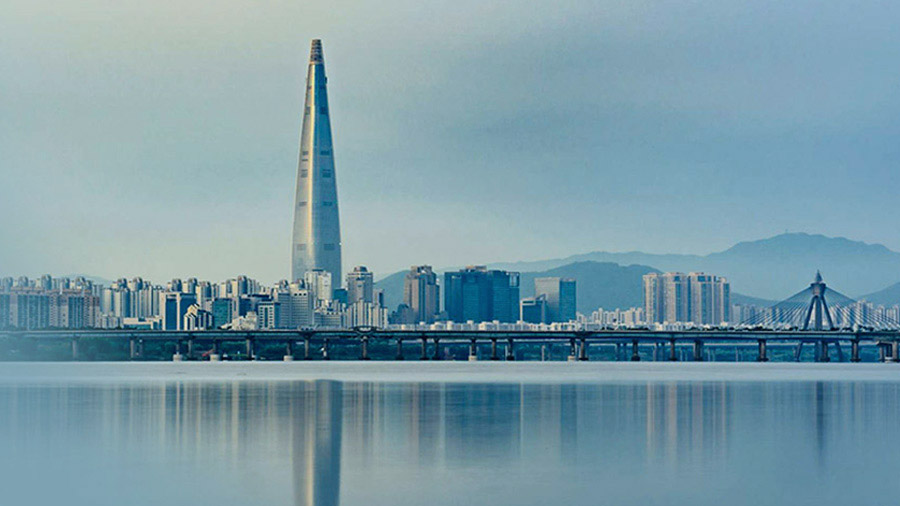With the BRICS 2023 summit now underway, we examine the India-BRICS trade dynamics.
The BRICS 2023 summit is now underway in Johannesburg, South Africa, with the Heads of State of Brazil, China, India, and South Africa all attending in person, together with significant trade delegations. The Russian President, Vladimir Putin, is attending by video-conference. The BRICS summit is expected to be a key moment in plans that could ultimately challenge the G7 group of nations in global economic and geopolitical influence.
In this article, Chris Devonshire-Ellis discusses the current position as concerns India - BRICS trade.
Background
The first meeting of RIC (Russia, India, and China) was held in 2005 in St. Petersburg. Brazil and South Africa joined the group in February 2011, when the current version of BRICS was completed. However, BRICS is not a formal alliance, and there are differences among members, but over the past decade, with dozens of meetings and summits, it has pursued common interests in strengthening mechanisms.
BRICS countries as a total currently include about 26 percent of the total global land mass, and about 42 percent of the world’s population. This basic clout means that BRICS combined efforts in restructuring the global economy and strengthening economic and financial cooperation have been welcomed by many countries – and been viewed with suspicion elsewhere.
Mutual economic cooperation
The BRICS have also provided alternatives to existing global mechanisms deemed to be heavily influenced by the collective West and their policies. The BRICS New Development Bank (NDB), established as a partial alternative to the World Bank, has approved over 90 projects worth US$32 billion to support members’ infrastructure.
Economic cooperation was also discussed at the 14th BRICS summit in June 2022. Paying attention to providing a better interfacing in handling global crises, forming a multipolar economic strategy, developing alternative commercial and financial routes, promoting economic recovery, diversifying the economy, minimizing costs, developing electronic commerce, integrating markets, and cooperating with other nations have made BRICS attractive to smaller and other emerging countries.
Practically, BRICS is seen as a union of strong emerging powers with a common currency reserve of about US4 trillion, which has already undertaken achievements in standing against unilateralism and can be useful when positioned as alternatives to Western controlled institutions such as the World Bank, the International Monetary Fund, and Western financial and trade policies in general.
BRICS 2023
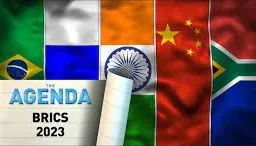 2023 is an important turning point in the BRICS development and its future global role. BRICS combined efforts are seen in cooperation and collaboration in developing alternative payment systems to SWIFT, the gradual development of a non-dollar financial system, the development of a common payment system (BRICS Pay), the increase of trade using respective domestic currencies, and creating a common currency.
2023 is an important turning point in the BRICS development and its future global role. BRICS combined efforts are seen in cooperation and collaboration in developing alternative payment systems to SWIFT, the gradual development of a non-dollar financial system, the development of a common payment system (BRICS Pay), the increase of trade using respective domestic currencies, and creating a common currency.
These are all progressing at different timescales, however the use of respective digital currencies in the settlement of future intra-BRICS trade will be a significant move. Russia, China, and India are all poised to launch their digital currencies for common usage by early 2025. This will allow trade to be conducted between them without the global SWIFT network and to reduce threats of the same upon other countries. Brazil and South Africa are close behind. In comparison, the United States and European Union, with rather more complex financial markets, have only recently agreed their digital currency protocols – a technical step the majority of BRICS members completed three years ago.
Strengthening the role of the New Development Bank (NDB) will help achieve BRICS national interests. The West’s approach to isolate Russia has created more incentives within the BRICS to increase trade with domestic currencies or create a common currency. The former has happened and is increasing; the latter will take time. Four to five new members of the NDB are expected; which could include Saudi Arabia and the UAE, which would give the NDB access to the Middle East region. Indonesia is a likely candidate from ASEAN, while Kazakhstan would give a Central Asian base. Argentina needs an alternative to non-Western financial support and would be another key asset in Latin America; and has been promised a succession vote at the current summit. Algeria and Thailand are also both potential candidates.
BRICS expansion
Incentives for official participation in BRICS have increased in 2023. Although “BRICS Plus” was created in 2017 and invited non-BRICS officials, over the last two years, China has supported the concept of expanding cooperation within the ‘BRICS Plus.’ Model.
Moscow has also mentioned the potential expansion of BRICS members from 5 to 17 nations. About 40 additional countries are believed to have expressed interest in joining and include heavy hitters such as Argentina, Egypt, Indonesia, Iran, Nigeria, Saudi Arabia, Turkiye, and the UAE.
In the meantime, in addition to reviewing the collective decision of the organization and having the necessary conditions and procedures for the process of accepting new members, the structure of BRICS and the process of accepting new countries may change with the joining of more countries.
India in BRICS
The Indian economy experienced solid economic growth, recovering from the COVID-19 crisis, with increases of 7.2 percent GDP in the 2022-23 fiscal year. Over the past decade, India’s policies have taken many initiatives to strengthen the economy, rapid economic growth, and exports.
India’s nominal GDP as of June 2023 is projected to be about US$3.75 trillion marking a significant growth rate of 16.1 percent. New Delhi’s attention to the service sector, implementing reforms, increasing industrial production and their exports, appropriate foreign policy, focusing on the information technology (IT) sector, increasing consumption, private investment, taking advantage of existing resources, increasing foreign exchange reserves, increasing investments in the sector, private sector, the continued flow of foreign direct investment and appropriate economic growth. India is now the fifth largest economy in the world.
The construction of industrial infrastructure in India and economic development, while a lack of complete dependence on a specific industry is such that industry, agriculture, services, and the financial sector are important economic and commercial sectors. Over the last decade, India has almost doubled its GDP per capita and can use BRICS as a platform to leverage its global influence.
New Delhi has made strides in signing free trade agreements (FTAs) with its trading partners and has taken several measures to promote trade, including plans for a digital platform and open access to BRICS.
India and intra-BRICS trade
India recorded over US$100 billion in intra-BRICS trade in 2022 and it has traded with all members. BRICS allows India to resolve mutual differences and use it to strengthen relations with Africa and South America.
India-Russia
Russia has rapidly moved from 25th to 7th position among India’s trading partners over the past two years. Between April 2022 and February 2023, bilateral trade reached a record US$45 billion. Almost a third of this volume was mineral products (including ore and fuel). In turn, India exported goods worth US$4.43 billion to the Russian Federation in 2021.These are mainly chemical products, machinery, equipment and vehicles, food products and agricultural raw materials. This trade can be expected to grow given the mutually desirable commodity items the two possess, in addition to improving trade routes shortly to become available via the INSTC.
Prognosis: Rapidly growing trade based on energy, however non-oil trade is also increasing. As Indian and Russian traders and consumers adapt, and supply chains such as the INSTC come online, the bilateral trade development between these two BRICS members is highly promising.
India-China
Bilateral trade between India and China touched an all-time high of US$135.98 billion in 2022, while New Delhi’s trade deficit with Beijing crossed the US$100 billion mark for the first time. Despite frosty political relations, bilateral trade is currently steady. The main products that China exported are computers, smart phones, and semiconductors, while India exported iron ore, refined petroleum, and raw aluminium.
Prognosis: Currently stable and showing signs of growth; but remains vulnerable due to political rivalry and disputed territorial security issues. If these can be resolved – and both leaders expressed exactly this desire during August 2023 – trade development could become dynamic if infrastructure connectivity can be improved.
India-Brazil
India is now the 5th largest trading partner of Brazil, with India exporting US$9.72 billion of products during 2022, a significant increase over 2021’s US$6.77 billion. Brazil exported US$6.34 billion to India during 2022, an increase from US$$4.9 billion in 2021.
The main products that India exports to Brazil are refined petroleum, pesticides, and packaged medicaments. The main products that Brazil exports to India are crude petroleum, soybean oil, and gold.
Prognosis: Mutually viable trade commodities and increased shipping routes are making Indian Brazil trade a vibrant case study of mutual trade recognition and effort. With bilateral trade growing at rates of 50 percent in either direction, this is a hot corridor.
India-South Africa
In 2022, bilateral trade reached just under US$20 billion, in a well-balanced trade relationship with a small increase over 2021. The main products that South Africa exported to India are gold, coal briquettes, and raw copper. The main products that India exports to South Africa are refined petroleum, autos, and special purpose ships.
Prognosis: India’s trade development focus is more on the entire African continent and especially east Africa, rather than South Africa per se. India’s total trade with Africa grew by 9.26 percent in FY 2022-23 reaching almost US$100 billion, with a goal to double this to US$200 billion by 2030. India doesn’t need South Africa’s regional connections so much as say China or Russia, as it already has a significant African network dating back to the British colonial times. Consequently, South Africa isn’t so important in terms of India’s overall Africa policy, but trade is steady, and opportunities can be found.
India plus
India is cautious about BRICS expansion. India’s role in the neighbouring SAARC trade organisation is a central part of its foreign policy, while India considers sub-regional cooperation to promote economic growth, social progress, cultural development, and security in South Asia. That said, India can use the strength and power of BRICS expansion to develop a strategy for regional cooperation within SAARC.
The SAARC trade network includes India as well as Afghanistan, Bangladesh, Bhutan, Maldives, Nepal, Pakistan, and Sri-Lanka. India dominates and makes sure multifactional trade does so on its own terms, resulting in a bloc that has been hindered in terms of its true potential. SAARC’s overall GDP is worth about US$4.47 trillion. Nevertheless, SAARC does have its uses and international investors interested in the India market can access SAARC nations under certain conditions if invested there.
India is also a member of BIMSTEC, a similar trade entity that includes Bhutan, Bangladesh, Myanmar, Thailand, Nepal, and Sri Lanka. It also tends to suffer from too much Indian love; however, opportunities exist. Routes east to ASEAN via Myanmar and Thailand may show future promise, as India also has a Free Trade Agreement with ASEAN.
The BRICS vision ahead
BRICS is facing many challenges, such as internal differences, global economic growth slowdown, geopolitical tensions, coordination problems, disagreements and different priorities of members, along with external pressures.
Economic cooperation within BRICS is still limited, and its cohesion is not especially strong, meaning we can expect an increase in institutionalising the various BRICS initiatives during this summit. There are also likely to discussions concerning BRICS trade liberalization and reducing each other’s import tariffs.
Although BRICS is not an official alliance, broad common interests such as moving towards a multipolar global governance system have brought greater opportunities with huge potential. In this way, it represents a huge consumer market, having a large middle class, natural resources, good communication and networks, a sound legal system, and modern infrastructure.
The existing BRICS 2025 strategy, which was implemented in 2020 and will soon be due for renewal, has been useful in developing trade and mutual investment between BRICS countries, strengthening customs cooperation, inclusive growth, and diversifying cooperation into different sectors.
Related bloc relationships
Should institutional connections between BRICS and regional unions such as the EAEU, Mercosur, and the SACU be established, the multilateral trading system will be strengthened. Technologies, especially in digital currencies and trade facilitation are also more likely to be shared, giving the BRICS – and its allies – a far greater trade platform to base themselves on. This is crucially outside the Western based system of management – SWIFT, sanctions, and overly influential policy banking.
This may also involve the Shanghai Cooperation Organisation (SCO) with discussions already taking place about merging; or increasing trade development ties between the two. The SCO is essentially a security bloc but does have a trade remit. It would also bring into the BRICS orbit the SCO members, who include BRICS members China, India, and Russia, in addition to full members Kazakhstan, Kyrgyzstan, Pakistan, Tajikistan and Uzbekistan. There are also four Observer States interested in acceding to full membership in Afghanistan, Belarus, Iran, and Mongolia, and six Dialogue Partners being Armenia, Azerbaijan, Cambodia, Nepal, Sri Lanka and Turkiye. In 2021, the decision was made to start the accession process of Iran to the SCO as a full member, while Egypt, Qatar as well as Saudi Arabia became dialogue partners.
With each of the BRICS members regional heavyweights in their own backyards, the development of BRICS into the major global economic and trade powerhouse has every potential of manifesting itself.
It should also be said that the opportunities of joining BRICS are more than the challenges. The joining of new members to BRICS can have various consequences, even competing with the G20.
In practical terms, the total percentage of the GDP of the current BRICS member countries is 31.5 percent of global GDP. That is more than the G7 bloc with 30.7 percent of global GDP, with the BRICS share almost certain to continue outstripping its Western equivalent as there are many potentials for using BRICS+ formats, with the participation of SCO, MERCOSUR, ASEAN, AfCFTA, SAARC, and so on in creating additional economic cooperation.
Chris Devonshire-Ellis is the Chairman of Dezan Shira & Associates. He may be reached at asia@dezshira.com
Dezan Shira & Associates assist foreign investors, including Indian clients into Asia and provide market intelligence, business establishment, bank account opening, tax advisory and related services to Indian businesses in Asia. We have been operational since 1992 and maintain multiple offices throughout India, and China, and have partner firms in Russia, Brazil, and South Africa. For assistance, please contact india@dezshira.com.
Related Reading
India: BRICS Now An Established Part Of Global Geopolitics & Trade



